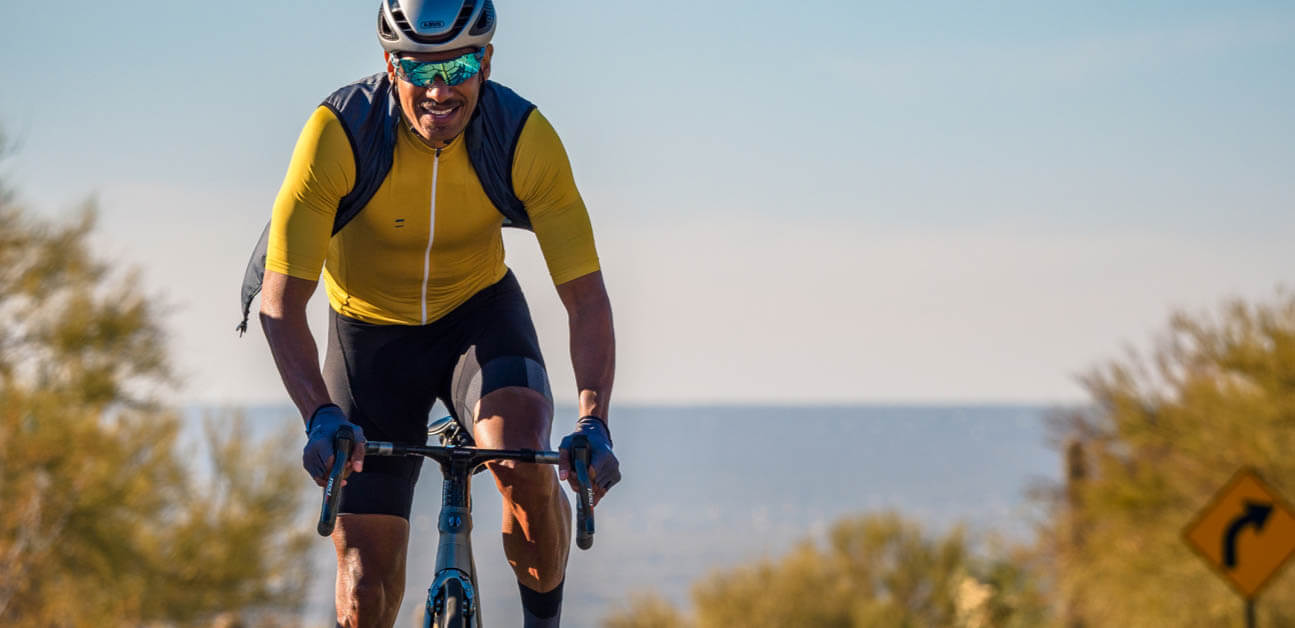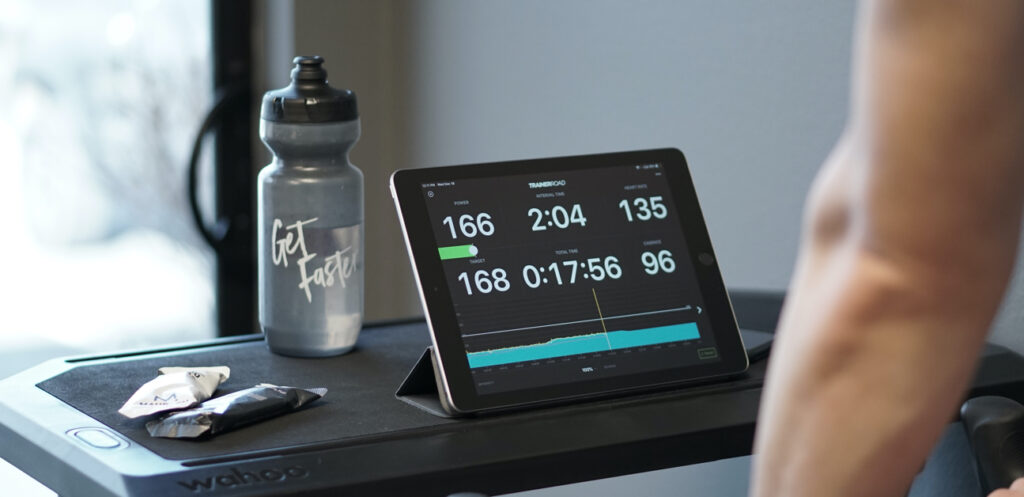Structured Training Without A Power Meter

Power-based training is the gold standard in modern cycling, but power meters aren’t required to effectively train with structure. Learning to train by feel can make you faster without expensive equipment, and can help you master your response to the discomfort of hard efforts. It can also develop the ability to push yourself harder on race day.
For more on training without a power meter, check out Ask A Cycling Coach Ep 284.
Alternatives to Power
The simplest and most accurate way to train without a power meter is with VirtualPower, which uses an inexpensive speed sensor to estimate your power data on an indoor trainer. VirtualPower is consistent, easy to use, and is an excellent option for many athletes, but it is limited to indoor workouts and requires a TrainerRoad subscription. For cyclists without an indoor trainer or without a TrainerRoad account, the two most common alternatives to power are Heart Rate and RPE (rate of perceived exertion).
Heart Rate-based training requires a heart rate monitor, and some sort of head unit or device to record and display data. Heart rate can be a useful secondary indicator of fatigue and exertion, but for structuring workouts it can be misleading. For one thing, it is a lagging indicator- it usually takes about 30 seconds into an interval to start increasing, making it unsuitable for guiding short efforts. It is also highly individual, and is extremely subject to outside influences like temperature and hydration. On its own, heart rate data often results in more confusion than clarity.
RPE is also subjective and can be somewhat imprecise. But it requires no special equipment and is immediately responsive to any change in effort. Furthermore, even if you train with a power meter, learning and controlling how your perception matches your exertion is a powerful skill. For this reason, we think RPE is an excellent option for every athlete, and we offer all Outside Workouts in an RPE-based version.
Training with RPE
RPE is judged on a self-assessed 10-level scale. Our scale abbreviates a few of the lowest (easiest) RPE ratings, since it’s difficult and unnecessary to discern between these low-intensity levels during a workout.
| RPE Level | Effort Intensity | Power Zone |
|---|---|---|
| 2 | Recovery | Active Recovery (<55% FTP) |
| 4 | Easy | Warmup/ Cooldown |
| 6 | Easy-Moderate | Endurance (55% – 75% FTP) |
| 7 | Moderate | Tempo/ Sweet Spot (76% – 94% FTP) |
| 8 | Moderate-Hard | Threshold (95% – 105% FTP) |
| 9 | Hard | VO2 Max (106% – 120% FTP) |
| 10 | All-Out | Anaerobic Capacity (>120% FTP) |
When training with RPE, find terrain or routes that suit your planned workout. For instance, use a 5-minute climb for efforts of that length, or a longer section of flat road for more sustained efforts. Don’t be afraid to turn around or cover the same section of road multiple times- there’s no rule that your route needs to look pretty or logical on a map. Many pro cyclists will spend an entire workout repeating a single climb over and over, and you’re better off going back and forth on a safe section of road than trying to sustain an effort through stop signs and intersections.
Try using a combination of landmarks and time to pace your efforts and set goals. For instance, if there’s a sign partway up your climb, try to reach it in a specific time on each lap. If you’re ahead of schedule on an interval, it might be a sign you’re over pacing that effort. Structured workouts rarely include all-out efforts, instead they favor multiple intervals at an uncomfortable but repeatable pace.
Landmark-based RPE workouts are simple and fun, and are a great way to add productivity to an outdoor ride. These workouts can be especially productive for beginners, for whom the absolute precision of a power-based workout is less essential. The same workout structures can be used on an indoor trainer, but expect each workout to feel a little harder indoors due to lack of coasting and constant resistance.
Adaptive Training
Get the right workout, every time with training that adapts to you.
Check Out TrainerRoadThe Power of Perception
Training and racing are all about pushing yourself. Structured interval workouts are often deeply uncomfortable, and force you to confront and override your body’s desire to stop. And while every athlete does have physical limitations, research suggests that it’s often your brain, not your muscles, that hold you back in the end. Whether you’re training with or without a power meter, a major goal of your time on the bike is to recalibrate your understanding of what you can achieve, and of how you respond to the discomfort of hard work.
This means RPE and how you handle it is key. Whether or not an RPE-based workout is objectively accurate in terms of power, it’s a highly-effective way of pushing yourself to an uncomfortable place, and with experience, that discomfort can be harnessed to your advantage both in training and on race day.
For example, as you learn how intense of an effort you can repeatedly sustain for five minutes, you can effectively pace intervals of this length during workouts. You can also use this knowledge mid-race, when a challenging moment can feel a little easier in comparison to what you know you’re actually capable of. Effectively utilizing RPE takes practice, self-awareness, and a willingness to get uncomfortable, but these are essential skills for every cyclist and will help you to get faster.
An Emotional Response
All animals experience pain, but humans are unique in how we attach emotional significance to this sensation. One additional benefit of RPE-based workouts can be to recalibrate your emotional response to the discomfort of hard work.
This isn’t easy, and it takes practice and intention. Begin by recognizing where your emotions go during workouts and intervals. If the pain of riding at high-intensity triggers anxiety or self-doubt, identify and acknowledge this response and work to replace it. Each time you finish an interval successfully, let the confidence form new associations with the pain of hard work, until this familiar discomfort triggers confidence and excitement instead of fear. By associating your perceived effort with a desire to succeed, you’ll be more likely to surprise yourself and transcend your limits when it counts.
